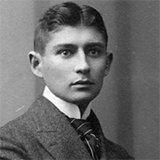» Today » Jul 03, 2025
Youth is happy because it has the capacity to see beauty. Anyone who keeps the ability to see beauty never grows old.
A prominent New Zealand politician and a Maori lawyer who fought for Maori rights all his life.
A German novelist and short stories writer who is widely regarded as one of the major figures of 20th-century literature.
An American actor and filmmaker who won three Golden Globe Awards.
An Australian software developer and internet activist, founder and editor in chief of Wiki-Leaks.
French explorer Samuel de Champlain establishes the first permanent European settlement in Canada, a trading post along the St. Lawrence River that becomes the city of Quebec.
George Washington takes command of the Continental Army of the American colonies at Cambridge, Mass.
The first savings bank in the United States opens: the Bank for Savings in New York City.
A Confederate charge led by Gen. George E. Pickett fails to break the Union line in the Battle of Gettysburg, sealing a Union victory and turning the tide of the Civil War.
After a long and brutal colonial war and a vote by Algerians for independence, French president Charles de Gaulle proclaims the independence of Algeria from France.
American rock singer Jim Morrison, lead singer of the Doors, dies in Paris of a drug overdose.

An Austrian novelist and short-story writer, who is considered one of the most significant figures in modern world literature, was born on July 3, 1883 into a middle-class Jewish family in Prague. His father was a merchant. He had studied law at the University of Prague. Kafka wrote in his spare time. Kafka's famous long short story was “The Metamorphosis”. His work has the qualities both of expressionism and of surrealism. His three novels for which Kafka is best known are The Trial, The Castle and Amerika.
He died on June 3, 1924 in a sanatorium in Austria,.
Author : Dr. Nidhi Jindal